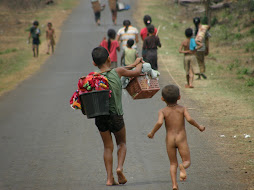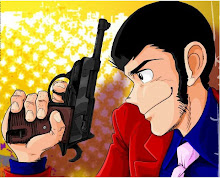“Who the hell is
Robin Masters?” was the only question about Hawai'i that me,
and most of the people back home (Catalonia), used to ask. The
moustached Magnum P.I. was our single reference on the Islands. Well,
and an '80s Spanish pop song that goes: “Hawaii, Bombay, are two
paradises”. First I went to Mumbai and although I loved the
place, I wouldn't call it paradise. And, two years ago, I visited
Hawai'i for the first time, and yep, paradise on Earth.
Now in my second visit to
paradise, my journalistic side made me research about the history of
the Islands and to have a glimpse at the actuality of the Hawaiians.
Didn't care any more if Higgins is Robin Masters, I wanted to learn
about the real people. I left the bubble and started the trip and the
more I learned, I was realizing that I knew very little.
During that trip through
the “dark side” of paradise I've talked with as many people as
possible, surfed the net for hours, sent lots and lots of emails,
watched videos and read books, and all of that has brought me to a
few conclusions.
Hawaii was illegally
occupied. The money and the military interests ruled, not caring
about the indigenous and their own concerns and lives, bringing
consequences to them that can't be denied. Numbers talk, and are
easier to understand than lots of words. Ok, probably are less
literary, but they do the job. There are some numbers that I find
shocking (and annoying):
Like the 1% that I learnt
of in Haunani-Kay Trask's book, the 1% being the growth of Hawai'i
residents' average real income during the early '70s and '80s, when
the tourism boomed in the islands and millions of dollars where made.
Millions that, after checking these figures, is obvious that didn't
go into the locals' pockets.
Or that more than 90% of
the food has to be imported (although you, Hawaiians, have the best
climate and the richest lands). That, together with some other
(infamous) stuff like 1920's Jones Act, increases the prices and the
cost of living drastically.
Or the 25% of Oahu's
territory belonging to the Military, while so many have been for so
long waiting for their Homelands.
Or that sadly only 0,2%
of people in Hawai'i speak 'olelo hawai'i.1
And so on. Numbers and
words. Injustices.
Another thing I've
learned is that there are lots of people fighting to change that.
With different points of view and following different paths, all of
them are trying to achieve justice and freedom for the people in the
Islands. Call them Nation of Hawaii, Lawful Hawaiian Government,
Council of Regency, Ka Lahui Hawai'i or even Na'i Aupuni. All, or at
least, most of them, are fighting a pono struggle.
And the aloha aina
warriors in Mauna Kea or the families that saved Olowalu and are
going to save Makena. And the ones teaching 'olelo hawaii.
Fighting, and wining fights. Like in the '70s with Kaho'olawe and,
tomorrow, for whatever is needed.
Third, Aloha
exists. I have seen it and I have felt it. I'm not talking about
ethereal stuff or floating energies, I'm not into all that. I'm
talking about that photo where a cop was giving a honi to a
protester, up at Mauna Kea, just before arresting him: respect and
aloha. Or the friendly and polite relation between protesters and
cops that I saw in Kailua, “we have to do our job” told me
one of the huge cops “but we are also part of this community”.
Fair enough, but wouldn't happen back home.
And in all the
interviews, while they were explaining me the injustices that the
kanaka maoli are suffering, none of them expressed any kind of
violent feeling and intentions, or any hatred to other people. Peace.
And aloha. Brandon, one of the people that has helped me more in my
quest, told me was vital to be able to save the world, that the aloha
was exported everywhere. I'm not sure if this would work; but it
would be well worth a try.
My journalistic side
doesn't only need to explore and learn, it also needs to explain the
findings. The people need to know the whole picture, not just the
palm tree in front of a red sunset. Obviously, I want them to know
how beautiful everything is, how many honu and sharks we see
underwater, how impressive are Molokai' sea cliffs, and the fun that
we have body boarding in Ulua Beach or eating tako poke in
some weekend farmer's market in Kauai; and explain them that, sitting
in a house yard in Waimanalo Homestead, I had in front of me the most
beautiful mountains I've ever seen.
But I would also like
them to learn about the thousands of homeless wandering around, the
Monsanto experiments, the nuclear weapons, the monk seals being
driven towards extinction, the sacred burial grounds violated for the
sake of building another luxurious hotel, and about Clinton
apologizing in 1993 (and nothing happening).
I have to come back for
more. To enjoy the amazing country that you have, but also to dig a
little deeper. Looking forward to meet all the Hawaiian friends
again, asking more questions and learning more about their lives and
their deaths. To put some more light on that dark side. I've seen the
cavern, but there is still the whole cave.
I can't finish this
contribution without a huge mahalo for all the people that
have talked with me, shared their manao and opened their
houses. Having been patient with my endless emails and questions.
Sorry for harassing all of you, but I needed to know. I still do.
1I
hope this information is accurate enough, as have been really
difficult for me to find an updated and trustful figure.


































































